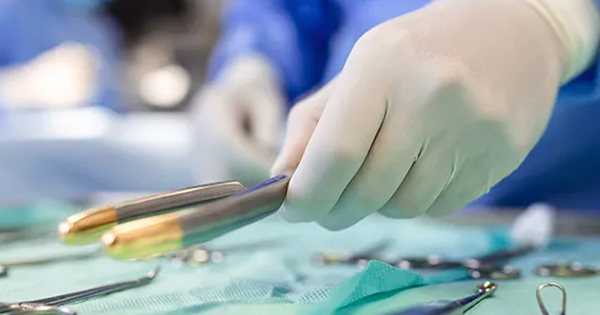The World Alliance for Wound and Lymphedema Care (WAWLC) is a non-governmental organisation, incorporated in Geneva (Switzerland), working in partnership with wound and lymphoedema care organisations around the world to foster best practices in limited resource settings. WAWLC does not deliver programmes itself but works with other organisations to develop capacity in resource-limited settings through mentoring and education. In 2020, the WAWLC published the second edition of Wound and Lymphedema Management (Keast, 2020), which focused on resource-limited settings. The question becomes; how do you define best practice in these settings.
Evidence-based Medicine
In the past, part of the art and necessity of the practice in healthcare was making decisions on the basis of tradition and, in many cases, inadequate evidence. This often led to variances in practice, inappropriate care and uncontrolled costs (Orsted and Keast, 2014).
In 2000, Sackett et al. described the concept of evidence-based medicine as “The conscientious, explicit, and judicious use of current best evidence in making decisions about the care of individual patients and involves integrating individual clinical expertise with the best available external evidence from systemic research” (Sackett et al, 2000). The Centre for Evidence-based Medicine in Oxford (UK), promotes evidence-based healthcare and provides resources for clinicians interested in learning more about evidenced-based practice (The Centre for Evidence-Based Medicine, 2025).
Multiple organisations have developed and maintained clinical practice guidelines for the prevention and management of various medical conditions. These clinical practice guidelines undergo a rigorous process in their development, including a thorough review of the literature, accessing clinical practice norms and compiling expert opinions. These guidelines are readily available on the internet through such agencies as the National Guideline Clearinghouse™ (Agency for Healthcare Research and Quality), a publicly available database of evidence-based clinical practice guidelines, or the National Institute Health and Care Excellence (NICE) in the UK. Many wound care organizations such as the European Wound Management Association (European Wound Management Association) maintain wound-specific guidelines.
Implementation of Evidence-based Medicine
Guideline documents are often very large, and implementation can be challenging, depending on the environment. Barriers may include lack of financial and other resources, inadequate or contradictory knowledge of evidence-based practice and an environment that does not support the implementation or sustainability of the guidelines. In resource-limited settings, implementation will require adapting guidelines to account for resources available, local cultural norms and availability of ongoing support. Many models for implementation of evidence-based, or best practice have been developed. Kitson et al (1998) have developed a simple model, which has three components required for successful implementation of best practice:
- Robust evidence: Best practice requires robust scientific evidence, such as developed for clinical practice guidelines.
- Context: The environment where the evidence is to be implemented needs to be prepared to receive the change in practice. Change strategies, such as assessing readiness for change, need to be employed. Barriers and facilitators for change must be identified, and strategies to reduce barriers and enhance facilitators must be sought.
- Facilitation: Change is difficult in any environment. For change to be sustainable, ongoing facilitation is required. This is often the piece that is ignored. Ongoing facilitation includes the training and mentoring of local practice facilitators to avoid outsiders taking over the care and creating dependency.
Figure 1 outlines a pathway that illustrates the foundations of implementing evidence-based medicine.
The following key practice points were identified by Ryan (2020) applicable to best practice in Resource-limited settings
- Focus on prevention and first aid.
- Advocate for the availability of cheap but effective dressings and devices through each government’s essential drug and dressings lists.
- Provide education to local traditional practitioners and incorporate them into prevention, first aid and wound management systems.
- Provide skin hygiene education to family practitioners and encourage the development of wound healing units in hospitals.
The Global Impact Of Chronic Wounds
Wounds have a significant impact on individuals, families, societies and health care systems (Macdonald, 2020). Preventable injuries related land mines, road accidents, burns and pressure related trauma are unfortunately common. In many settings malnutrition is a key factor in skin breakdown. Infective causes, such as lymphatic filariasis, Buruli ulcer, Hansen’s disease, can result in chronic wounds and permanent disability. Venous disease and ulcers related to diabetic peripheral neuropathy are often under recognized and under treated. Chronic oedema/lymphoedema is increasingly recognized as significant problem. In a review of a large database of persons suffering from chronic oedema/lymphoedema the prevalence of wounds ranged from 2.0 to 73.6% with the higher prevalence occurring in persons with lower extremity lymphoedema and advanced age (Keast et al, 2021).
The Wound Management Cycle
The approach to the chronic wound is based on the Wounds Canada Best Practice document (Orsted et al, 2025). The key strategies are shown in Table 1.
The Importance of Teamwork
When establishing a wound care program in a resource-limited setting, it is important to form at least one “centre of excellence” in wound treatment and wound education (Treadwell, 2020). Good wound management principles can then be taken to the surrounding areas. This can only be done by identifying the local caregivers and giving them the educational tools and resources to practice good wound care within the bounds of their religious and cultural beliefs. Project monitoring and training evaluation must be integrated into every level if the project is to make a sustainable difference in the lives of the people it intends to help. As mentioned in the introduction, sustainability depends on ongoing mentoring and support. Local wound care champions must be identified and provided with education and support to take on this mentoring role.
The WAWLC Kit
WAWLC consider the need to develop a basic tool kit to enable best practice in situations where resources may be limited. Based on a series of in person meetings in conjunction established wound care conferences, clinicians experienced in work in limited resource settings reached consensus on the principles in establishing such a kit (Comte and Vuagnat, 2020). These include:
- Contain the necessary renewable materials to make up to a hundred standard size (10 cm × 10 cm) wound dressings
- Be easy to use for nursing or medical staff
- Enable the principles of modern wound care to be met
- Be transportable by plane, ship, or road
- Be able to be transportable, in case of emergency, by plane in hand baggage and be able to easily pass through customs
- Be easy to store and quick to identify (expiry date, origin of the materials, name of the kit, list of contents)
- Be able to be stored stably in humid conditions and high temperatures (50°C) and have a shelf life of more than 2 years
- The kit can be assembled from the list found on the WAWLC website (World Alliance for Wound & Lymphedema Care).
Lymphedema in Resource-limited Settings
Best practices cannot be implemented until the extent of the problem is know. The overall prevalence of lymphoedema in limited resource settings is not known. Just as in more developed countries, it remains poorly recognized. To improve the understanding of the prevalence and characteristics of persons living with lymphoedema, the International Lymphoedema Framework has developed the Lymphoedema Impact and Prevalence International project (LIMPRINT), a standardised case finding and assessment project. By 2018, the project had been implemented at 40 sites in nine developed countries under the sponsorship of national frameworks. Of note, recently a national lymphoedema framework has been formed in Uganda and the LIMPRINT project is currently in progress
However, the most common cause of lymphoedema globally is lymphatic filariasis, a mosquito borne parasitic infection involving the lymphatic system. It is particularly prevalent in resource-limited settings in tropical areas. The Global Alliance for the Elimination of Lymphatic Filariasis, supported by the World Health Organization, has been working to eliminate the problem. According to the Global Alliance to Eliminate Lymphatic Filariasis website (GAELF) over 657 million people in 39 countries worldwide remain threatened by lymphatic filariasis. As of 2018, 51 million people were infected. Elimination is accomplished through vector control by mass drug administration, which kills the microfilaria. While the parasite is eliminated the morbidity related to the damage done to the lymphatics remains and must be managed.
The key practice points are:
- Prevention strategies must focus on breaking the transmission cycle through vector control and mass drug administration.
- Morbidity must be managed through meticulous skin care, exercise, compression therapy and adapted manual therapies (Hettrick and Ryan, 2020).
- The major challenge in resource-limited settings is accessing compression therapy. In many instances this has involved finding sources of donated compression garments.
- One very successful example comes from setting up integrated medical clinics for self-care of lymphoedema in Indian villages (Ryan et al, 2020). This involved:
- Conducting surveys to determine the extent of the problem in cooperation with government health authority
- Establish a community-based integrative medicine clinic that was team-based and led by a doctor trained in traditional Ayurvedic medicine
- Creating lymphatic filariasis camps to target community awareness in conjunction with local leaders. It would involve education and classes in basic skin care and simple yoga
- Implementing treatment protocols that integrated biomedical principles with traditional Ayurvedic medicine
- Providing patient and caregiver education on self care strategies
- This clinic has now received Gates Foundation funding to help implement this approach in other settings.
Conclusion
Best practice in resource-limited settings follows the same basic principle. It involves an understanding of the best evidence available adapted to take into account patient factors, social and cultural norms and the resources that are available.





